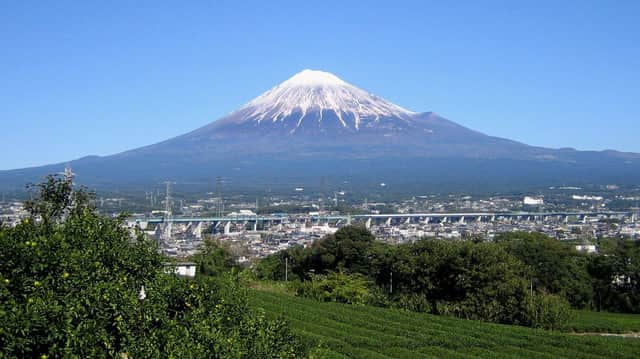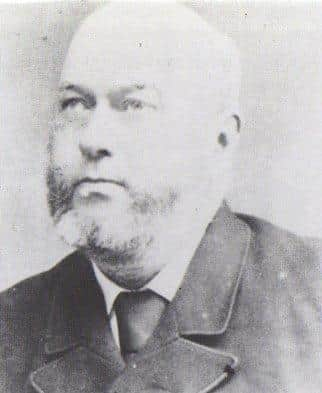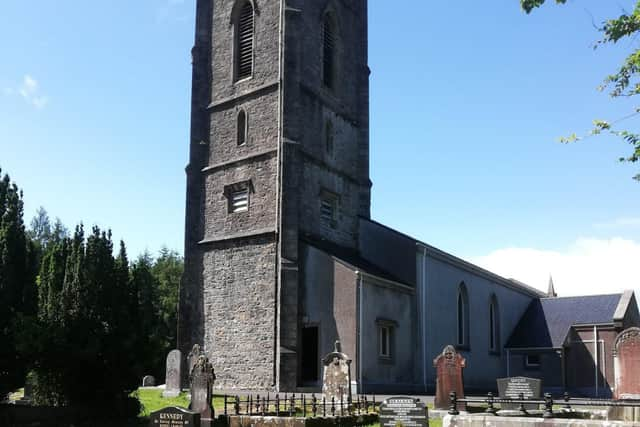Big in Japan: Doctor made his mark on medicine and mountaineering


Portadown-born Sir Robert was a British diplomat and Chinese government official, regarded by historians as the most significant westerner in China’s Qing Dynasty.
Robin’s ongoing research now includes other local folk who made their mark on the history of other countries in that faraway part of the planet, such as Japan and Korea.
Advertisement
Hide AdAdvertisement
Hide AdOne is Dr William Willis, a Fermanagh-man with a fascinating story.


Robin shares the first part of the story here today, with more on Friday’s page.
Two valuable sources on the extraordinary life of William Willis are his letters, and the biography written by Sir Hugh Cortazzi, a 20th century British ambassador in Japan.
William was born near Maguiresbridge, County Fermanagh on 1 May 1837, the youngest son of George Willis and Hannah Waugh - her father was the Governor of Londonderry gaol.
Advertisement
Hide AdAdvertisement
Hide AdWith the help and support of his older brother George, William studied medicine at Glasgow and Edinburgh Universities and became a member of the Royal College of Surgeons in Edinburgh.


In 1859, he produced a paper on the ‘Theory of Ulceration’ which he deemed “of great scientific and practical importance.”
Initially he worked at the Middlesex Hospital in London, where he fathered a son with Maria Fisk, a maidservant, before being accepted for a medical post with a generous salary in the British Consular Service in Japan.
The Dublin Evening Mail announced on 23 November 1861: “British Consulate in Japan - Her Majesty has been pleased to appoint William Willis, M.D., Consular Assistant and Medical Officer to Her Majesty’s Consulate at Hatotadi. Earl Russell nominated Dr Willis on the recommendation of Sir Charles Locock and other eminent physicians, in consequence of the ability which he displayed in the discharge of his duties as House Surgeon at the Middlesex Hospital, London. The salary commences at £500 a year.”
Advertisement
Hide AdAdvertisement
Hide AdWillis travelled to the newly re-established British Legation in Tokyo, then called Edo, in May 1862.


(A legation was a diplomatic representative office of lower rank than an Embassy. The latter was headed by an Ambassador, a legation was headed by a Minister.)
Willis experienced a violent incident against the British legation on the night of 26 June 1862, then housed in Tozenji Temple in Shinagawa. During this, ronin (wandering samurai) killed two British Marines.
Willis wrote: “I was suddenly aroused by strange and alarming cries like those of an infuriated wild animal, the beating of Japanese drums and other evidences of an attack. I jumped out of bed and rushed to the door where I met Corporal Crump now deceased.
Advertisement
Hide AdAdvertisement
Hide Ad“Corporal Crump descended from the passage leading from my rooms to the interior of the building and about five yards from my door encountered an assassin.
“A conflict immediately took place. The Corporal discharged his revolver and pronounced my name with great distinctiveness. I stood over the ledge of the passage, I confess, expecting every moment to be attacked and cut down…(Willis remained there) looking out for any Japanese that might present himself whom I would most certainly have shot as I had my revolver at full cock.”
From 1862 to 1867, Willis was mainly in Yokohama to which the legation had prudently relocated.
As well his clerical duties, he opened the first pharmacy there, where he also treated patients. He attended the scene of the murder of British merchant Charles Lennox Richardson, in September 1862, the so-called Namamugi Incident.
Advertisement
Hide AdAdvertisement
Hide AdWillis commented (somewhat acerbically!) about the expatriate Consular staff in June 1866 - “most of the young fellows seemed to have injured more or less permanently their constitutions with syphilis. The majority of these…men are very weedy and a little upsets them.”
Later that year Willis was promoted by the British Minister Sir Harry Parkes to be First Assistant at the legation.
In November 1866 there was a major fire which burnt down a good deal of Yokohama’s foreign settlement and Willis lost most of his possessions.
In 1867 he accompanied Sir Harry Parkes for an official call on the last Shogun, Tokugawa Keiki, at Osaka.
Advertisement
Hide AdAdvertisement
Hide AdHe commented wryly: “We all mustered such uniforms as we could, but I confess we did not look very grand. Sir Harry’s clothes were burnt in the destruction of his house by fire last January and my dress was the old Inspector’s uniform I brought out with me with a row of brass buttons gilt.”
Nor was the Fermanagh man any more complimentary about Osaka which he described as “the most uninteresting city in the world…It is all moonshine about it being a wealthy place.”
However, he was more enthusiastic about Mount Fuji which he climbed with Sir Harry and Lady Parkes, in October 1867:
“My great piece of news is that I got to the top of Fujiyama…The cave we put up at for the night was cold to an extreme degree…the Japanese never ascend so late and it was looked upon as a dangerous proceeding on our part.”
Advertisement
Hide AdAdvertisement
Hide AdRead more on Friday’s page about Dr Willis, who died on 14 January 1894 in Moneen, near Florencecourt, in County Fermanagh.
A message from the Editor:
Thank you for reading this story on our website. While I have your attention, I also have an important request to make of you.
In order for us to continue to provide high quality and trusted local news on this free-to-read site, I am asking you to also please purchase a copy of our newspaper whenever you are able to do so.
Our journalists are highly trained and our content is independently regulated by IPSO to some of the most rigorous standards in the world. But being your eyes and ears comes at a price. So we need your support more than ever to buy our newspapers during this crisis.
Advertisement
Hide AdAdvertisement
Hide AdWith the coronavirus lockdown having a major impact on many of our local valued advertisers - and consequently the advertising that we receive - we are more reliant than ever on you helping us to provide you with news and information by buying a copy of our newspaper when you can safely.
You can also enjoy unlimited access to the best news from across Northern Ireland and the UK by subscribing to newsletter.co.uk
With a digital subscription, you can read more than five articles, see fewer ads, enjoy faster load times, and get access to exclusive newsletters and content. Visit https://www.newsletter.co.uk/subscriptions now to sign up.
Thank you